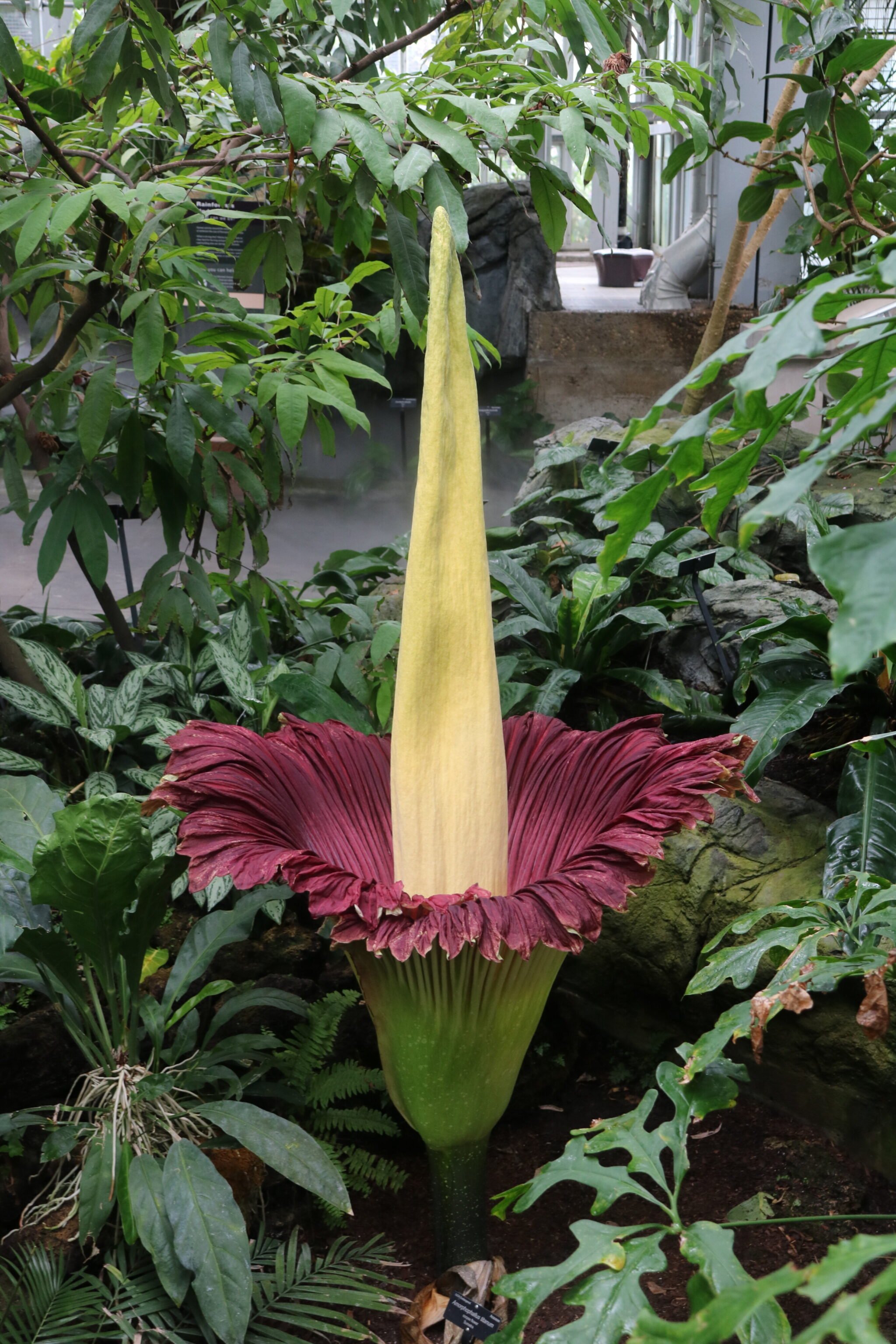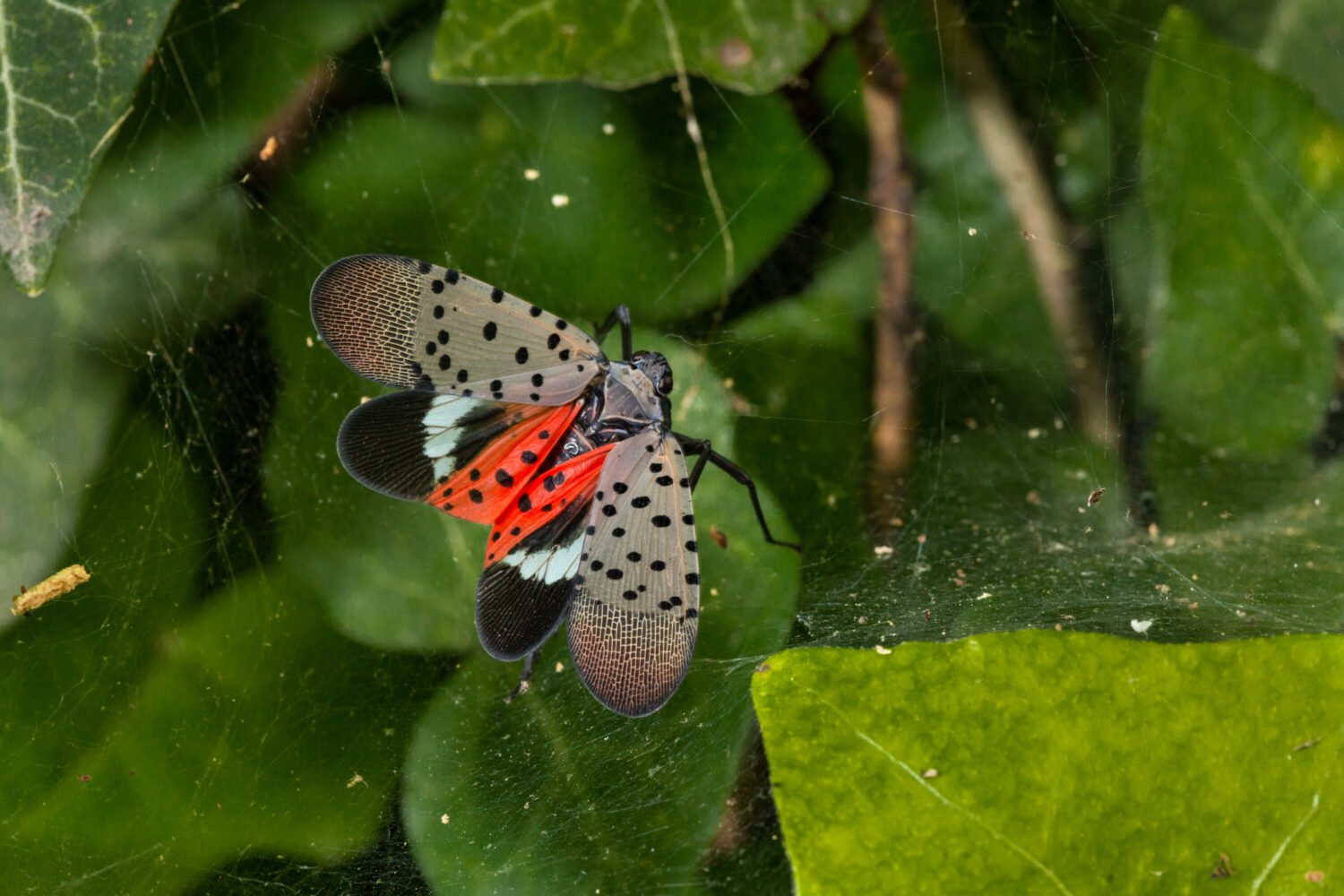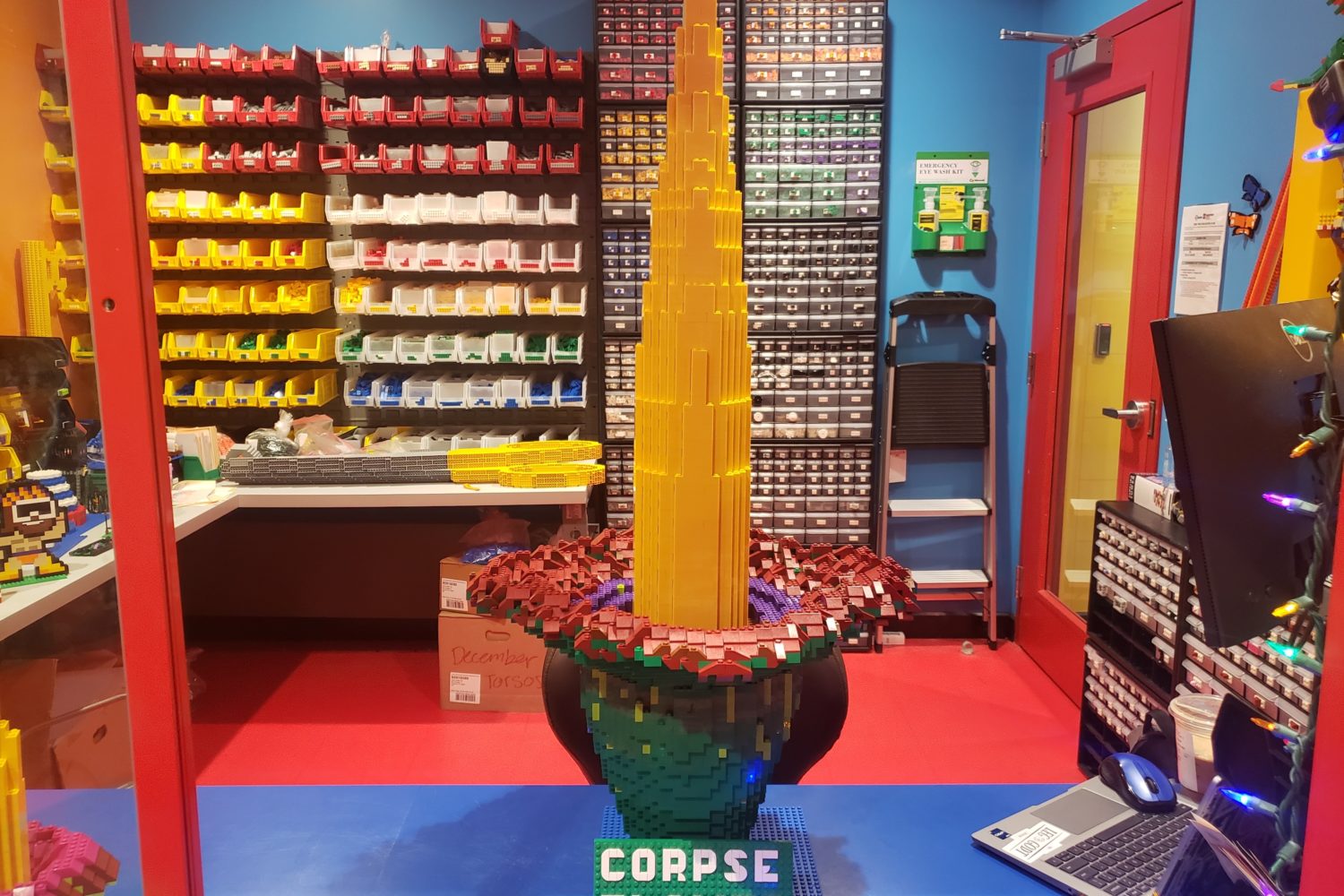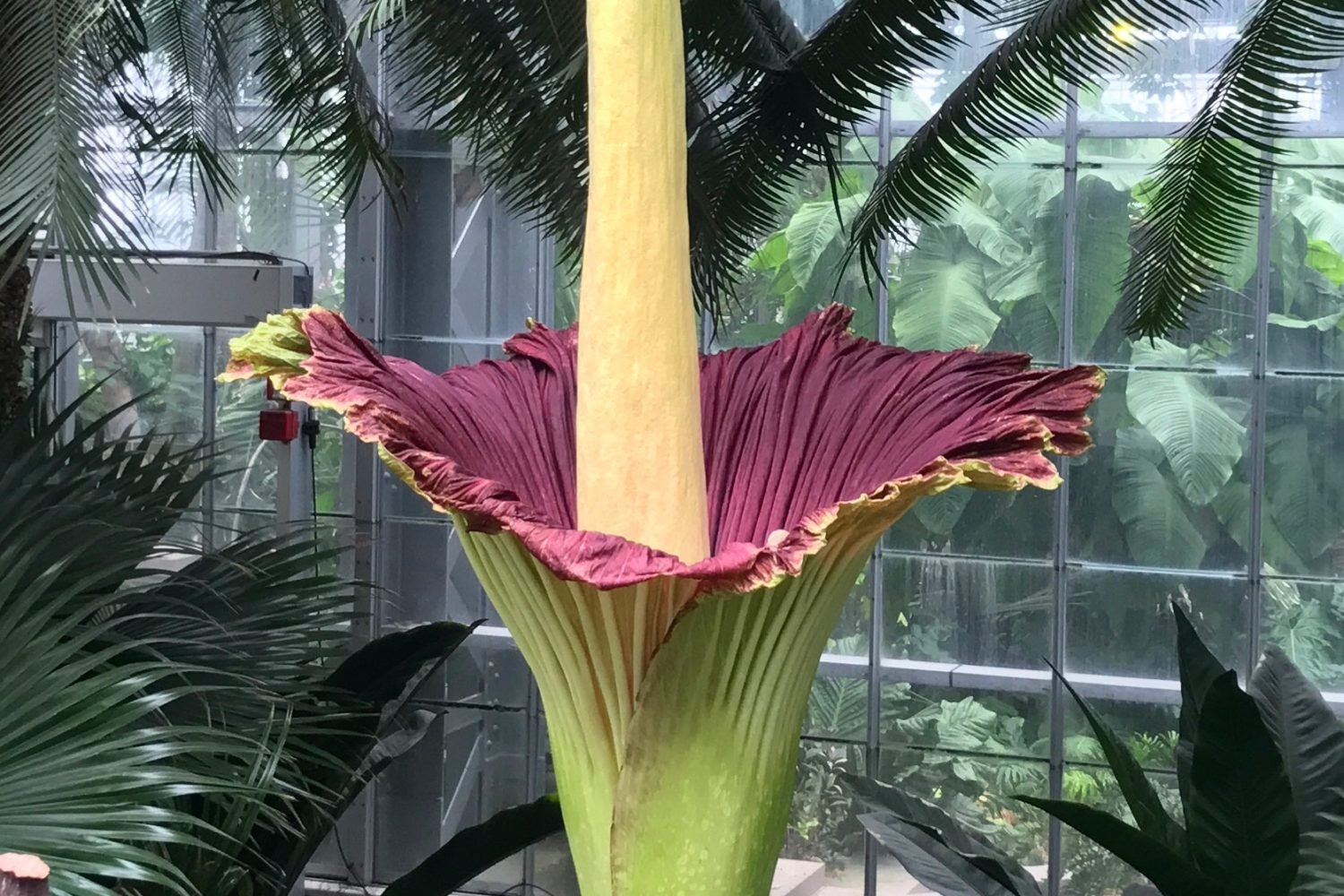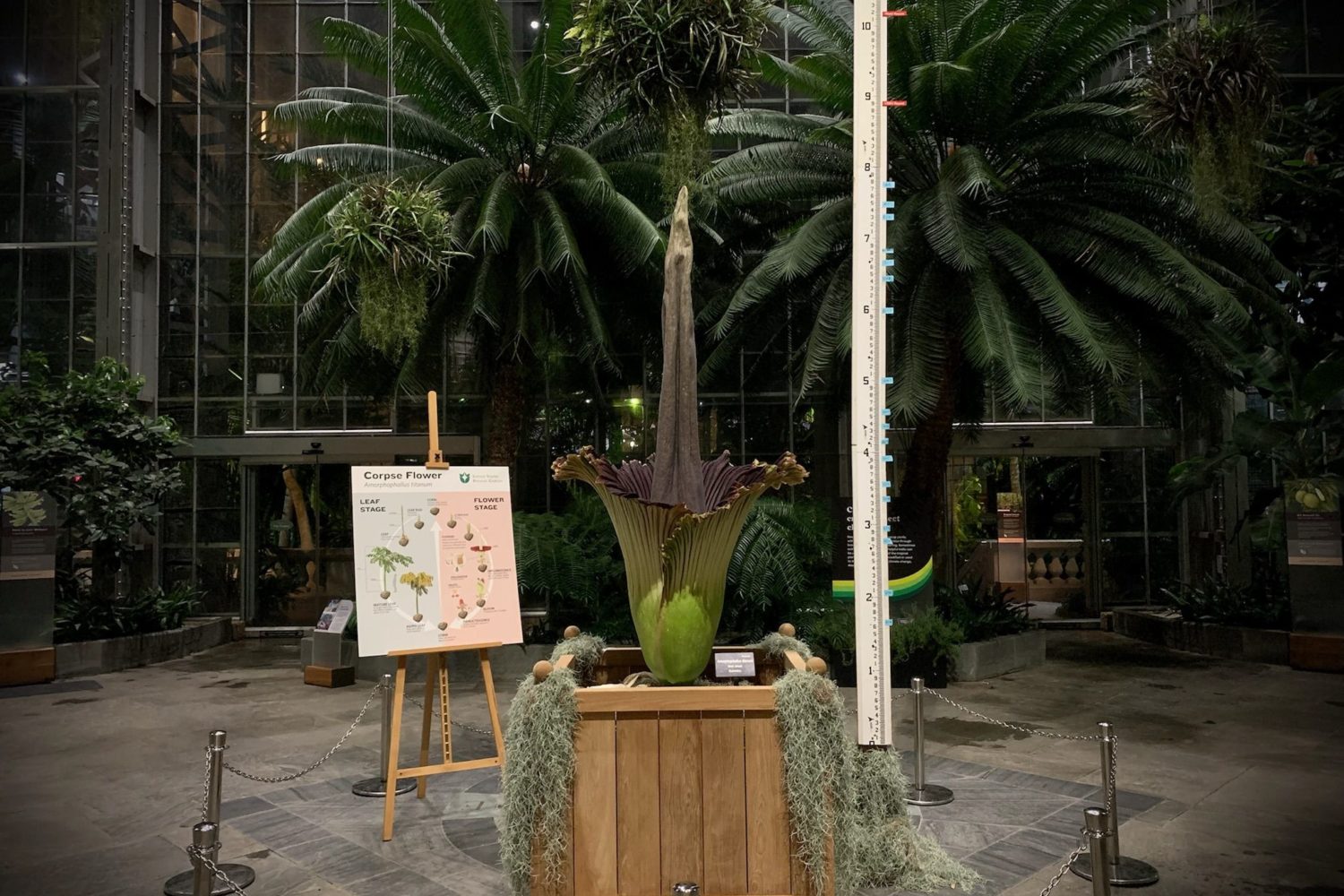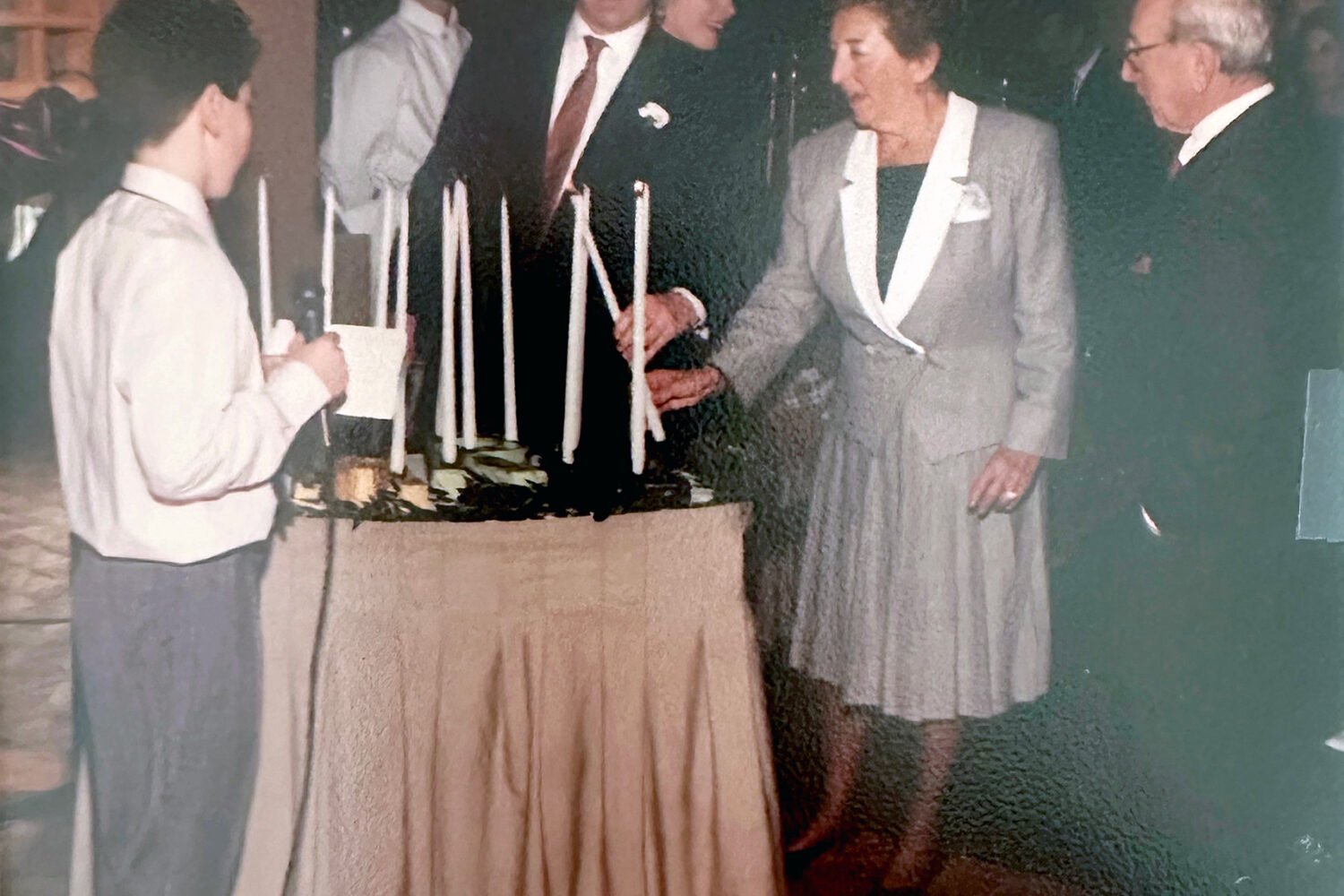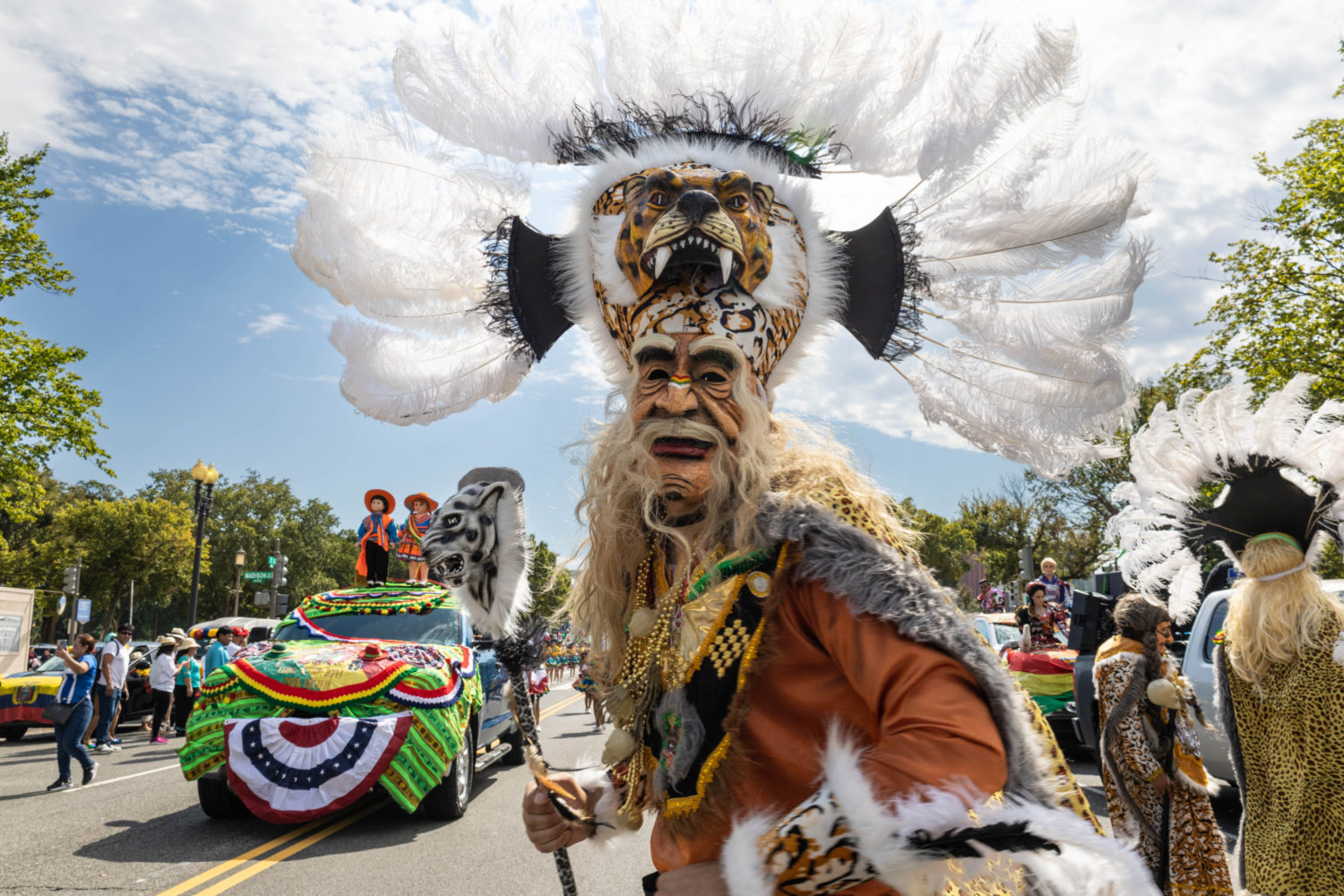Thousands of visitors are clamoring to catch a glimpse—or a nausea-inducing whiff—of a corpse flower at the US Botanic Garden in Washington, DC during its rare and fleeting bloom on Tuesday and Wednesday. In the garden’s Tropics house, visitors swarm the plant like flies to honey. But the corpse flower is no sweet-smelling bloom: it’s so-named for giving off the putrid smell of rotting flesh, and is considered the stinkiest plant in the world.
Luckily for those of us less excited about the corpse flower’s odor, the worst of the stench is over, but the bloom is still beautiful. A corpse flower, or Amorphophallus titanum, blooms for only two to three days every two to three years, with the smell hitting its peak shortly after the plant opens. This corpse flower started blooming on Tuesday afternoon, and smelled foul by yesterday evening, according to Devin Dotson, a spokesperson for the Botanic Garden. But when the garden opened on Wednesday morning, the smell was mostly gone, with only the occasional whiff of dumpster or rotting roadkill.
The corpse flower’s bloom should continue through Wednesday, Dotson says. If you haven’t had a chance to admire it yet, you can join lines out the door to see the plant until the garden closes at 6 PM tonight.
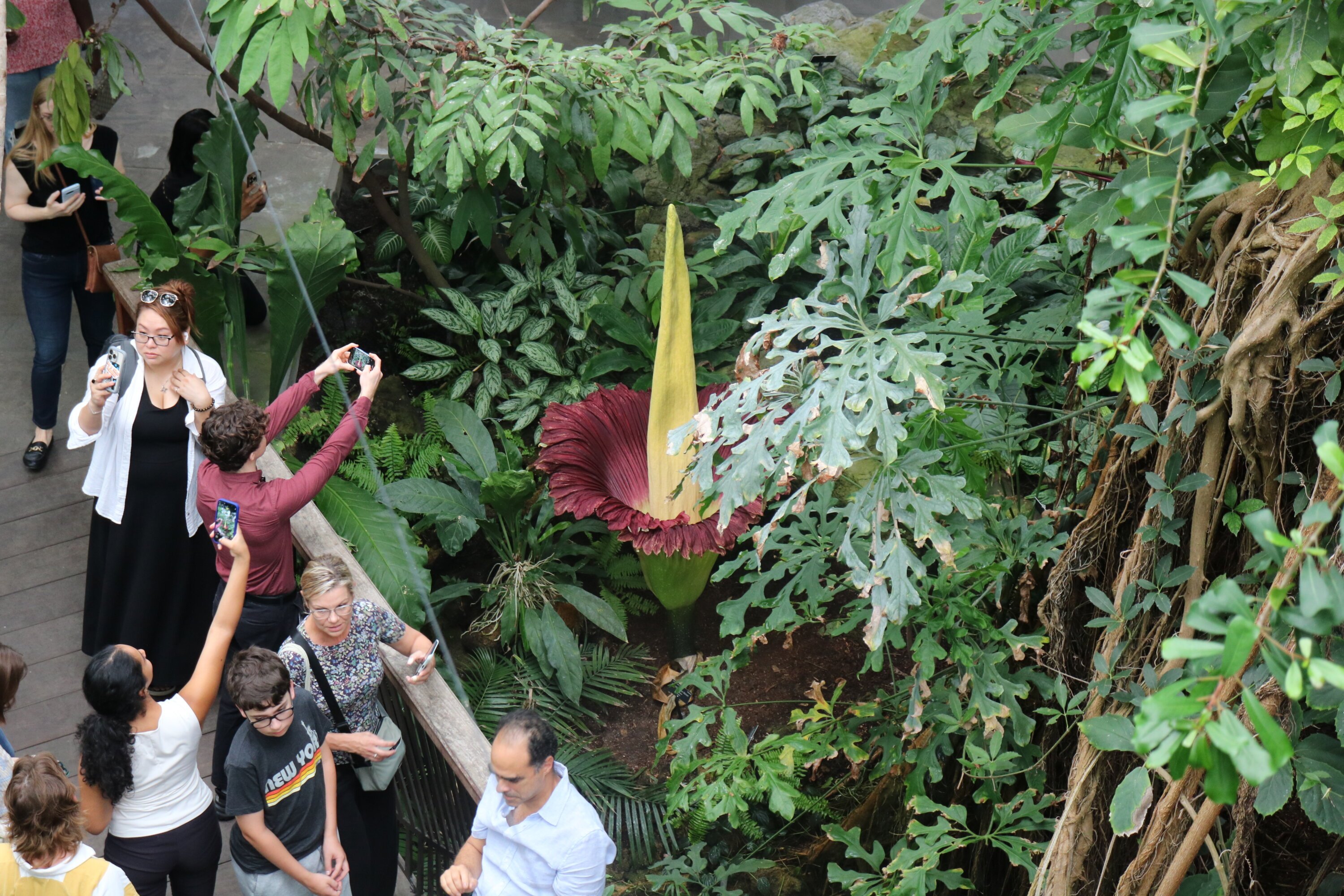
At 88 inches tall and 48 inches across, the corpse flower is a sight to behold. “It’s a pretty remarkable thing,” one visitor tells me. Several visitors speak in hushed, awed voices about what a “once in a lifetime” experience it is to see the plant—endearing, but not quite accurate. This corpse flower, which is eight years old, will likely bloom again in a couple years or so, and the Botanic Garden actually has about 35 other corpse flowers, Dotson says. So, if you have to miss this bloom, don’t fret—the garden may have one or two others blooming later this summer.
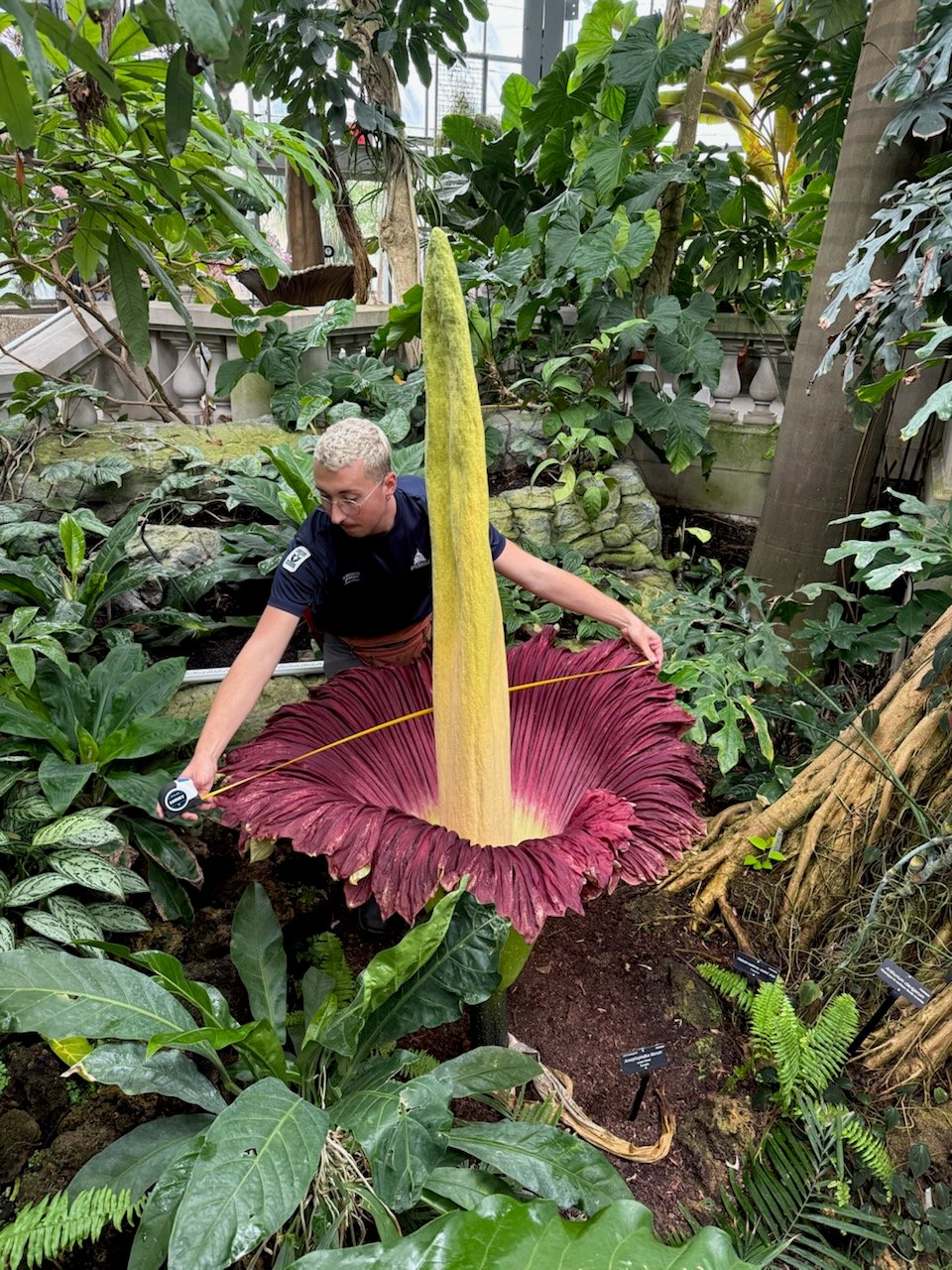
One thing that is unique about this corpse flower, though, is that it’s permanently planted in the ground. “For us, this was a science experiment,” Dotson laughs. “Every other bloom we’ve ever had, and pretty much every other botany garden anywhere, the corpse flowers are always in pots because they need to be in a specific greenhouse that is extremely hot and humid every day of the year.” Mind you, the Botanic Garden’s Tropics house is hot and humid (the sweat I’m sure was slowly drenching my face as I did this interview can attest), but the facilities these plants are normally grown in are even more tropical. Those conditions are meant to emulate rainforests in Sumatra, Indonesia, where corpse flowers are native to. The plants (which are not technically flowers, but rather, inflorescences, or collections of many flowers acting as one) are endangered, with fewer than an estimated 1,000 in the wild.
Corpse flowers stink because they’ve evolved to attract pollinators by emulating dead, rotting animals. “It’s red-colored, it’s stinky, it even heats up,” Dotson says. “All these signs say, ‘I’m a dead animal carcass. Please come and lay your eggs here, please bring pollen from another plant.’” I escaped the worst of the smell by showing up about 20 hours after the plant first bloomed, but Dotson offered some gross imagery to help me imagine what I missed: “a dead animal along the side of a road on a hot summer day” or “restaurant trash with food, vegetables, and meats that have started to decompose in the heat.”
I can’t say I’m disappointed to have missed all that. One visitor tells me, “[A Botanic Garden staff member] was saying that it only stinks for a certain period of time, and I know everyone wants to smell it, but maybe that’s actually a good thing.” Behind her, a little girl runs away holding her nose—so I guess some of us are still catching the stench.

